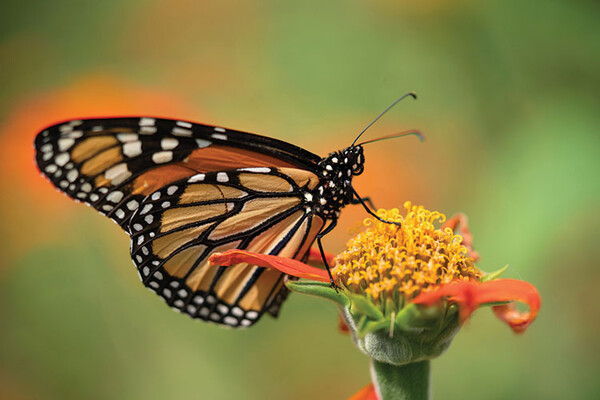 Written by Susan Himes, TAMU
Written by Susan Himes, TAMU
A Texas A&M AgriLife Extension Service online learning course on butterflies is now available. The course covers butterfly biology, how to identify different species and what plants will attract them to a garden.
The cost for the course is $25, and it is available at https://tx.ag/ALLButterfly.
The two-and-a-half-hour course consists of three modules, allowing participants to watch the videos and learn at their own pace.
“The course was born from years of people asking me about butterflies and creating a butterfly garden,” said course creator Molly Keck, AgriLife Extension entomologist, Bexar County. “When I speak at a Texas Master Gardeners or a garden club event, I can only give them a teaspoon of information on butterflies, I can’t get as in-depth as I can in a course, so I created this one.”
The online course consists of three parts: Butterfly Biology, Common Orders of Butterflies and Host Plants.
Butterfly biology
The first section covers the biology of butterflies and provides an understanding of the insect’s lifecycle.
It is a butterfly’s body parts that make it an “accidental pollinator” since it only seeks out nectar, Keck explained. Pollen can become attached to a butterfly’s legs, body or mouthparts, which in turn can pollinate other plants.
She said the insect’s defense mechanisms will also be explored, as will butterfly classifications.
Who’s who among butterflies
“I think people will be amazed at how many different species of butterflies we have here in Texas,” Keck said.
She said they can be tricky to identify sometimes because many can look similar. The Common Orders of Butterflies section of the course covers 30 Texas species, which includes monarchs, leafwings and painted ladies.
“Participants will also learn the most common butterflies for each region of the state,” she said.
How does your garden grow?
The third section of the course, Host Plants, covers best practices for creating a butterfly garden, including the plants to select that will attract the adult butterflies, such as swallowtail and milkweed butterflies.
“It’s important to choose plants that not only attract butterflies, but will do well here,” Keck said.
In the course Keck covers Texas Superstar plants that will serve as good butterfly attractors.
“These are the plants that grow well all across Texas and are water efficient,” she said. “In addition to attracting butterflies, other pollinators will also be drawn to the right plants.”
The course also has an interactive portion, which allows participants to virtually explore a garden.
Keck said she hopes butterflies will serve as a gateway for people to also become more interested in other insects.
“Everyone enjoys butterflies — no one is afraid of butterflies; they are like the birds of the insect world,” she said.













